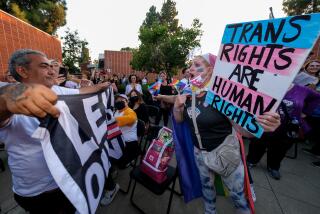Stacking the deck on the stem-cell program
What are the chances that the prestigious Institute of Medicine will get an objective and balanced view of California’s stem-cell program when it takes public testimony about the program at a hearing Tuesday in San Francisco?
About 418 million to one.
That’s the estimation of the California Stem Cell Report. The report’s proprietor, David Jensen, toted up the value of the grants received from the program by Tuesday’s witnesses or their employers. Total: $418 million.
The IOM was given a $700,000 contract by the stem-cell program, which is formally known as the California Institute for Regenerative Medicine and was created by Proposition 71 in 2004, to look at its record. CIRM clearly hoped for a glowing review to help it pitch for another infusion of bond-issue cash from California voters to add to the $3 billion authorized by Prop 71.
There’s been no dearth of criticism of CIRM since its inception: questions about conflicts of interest among its board members, about whether it’s spending its billions wisely, about whether its narrow focus on stem-cell research is scientifically too narrow.
As Jensen observes, the IOM, which is an arm of the federally chartered National Academy of Sciences, won’t be hearing from any of the bodies that have been critical of the stem-cell program over the years. These include the state’s Little Hoover Commission, which issued a blistering report about the stem-cell program in 2009, or the Oakland-based Center for Genetics and Society, which has followed the program closely from the start. They’re not on the witness list.
The hearing will open with more than three hours of presentations from officials of the program. These witnesses include CIRM Chairman Jonathan Thomas and its president, Alan Trounson. They’ll be followed by witnesses from UC Berkeley, UC San Francisco, UC Davis and Stanford, which have collected those millions in grants from CIRM over the years.
Jensen says he asked the IOM why no objective witnesses were on the hearing list. An IOM public relations person directed him to a survey form members of the public could fill out (though the link for the form on the IOM’s website was dead when I checked it). Members of the public will also be permitted to address the IOM panel at Tuesday’s hearing. They’ll each get up to five minutes.
The insular character of the stem-cell research community always has made objective evaluations of CIRM difficult -- most of the experts in the field are in a position to seek grants from the program or work with it on grant review. The IOM study could have been a counterbalance to that. But that doesn’t look like it’s about to happen.
RELATED:







